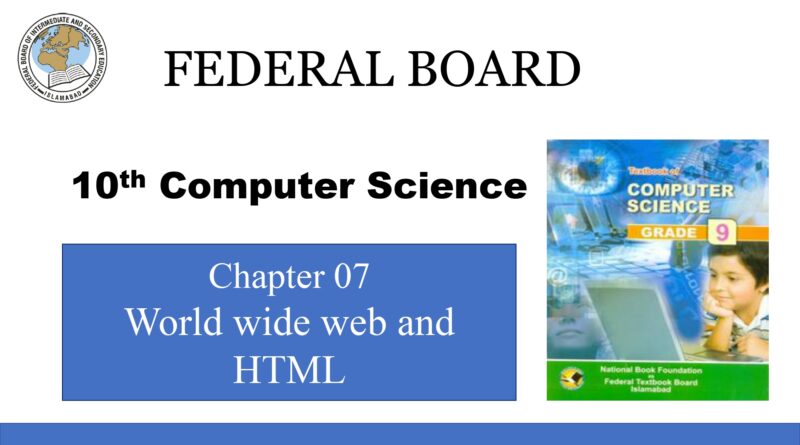10th Computer Science Chapter 7 World wide Web
Exploring the World Wide Web
In 10th Computer Science Chapter 7 World wide Web curriculum, students delve into the fundamental principles and workings of the World Wide Web (WWW). This chapter serves as a comprehensive introduction to the internet’s most ubiquitous platform, providing students with a foundational understanding of how information is accessed, shared, and organized online.
Key Topics Covered:
Introduction to the World Wide Web:Students begin by understanding the concept of the World Wide Web as a global system of interconnected computer networks that use the internet protocol suite to access information resources.
Evolution and History:
A brief overview of the history and evolution of the World Wide Web, including key milestones, such as the invention of the HTTP protocol and the development of web browsers.
Basic Architecture:
Exploring the basic architecture of the World Wide Web, including the client-server model, web servers, web browsers, and the role of URLs (Uniform Resource Locators) in accessing web resources.
Hypertext Markup Language (HTML):
Introduction to HTML, the standard markup language used to create web pages. Students learn about the structure of HTML documents, including elements, tags, and attributes.
Cascading Style Sheets (CSS):
Understanding the role of CSS in web design and presentation. Students explore how CSS is used to control the layout, formatting, and styling of HTML elements.
JavaScript:
An introduction to JavaScript as a client-side scripting language used to create interactive web content. Students learn about the basics of JavaScript syntax, variables, data types, and control structures.
Web Development Tools:
Overview of popular web development tools and software, including text editors, integrated development environments (IDEs), and web browsers’ developer tools.
Web Standards and Accessibility:
Discussion on the importance of web standards and accessibility guidelines in creating inclusive and user-friendly web experiences. Students explore the principles of responsive design and cross-browser compatibility.
Web Security:
Introduction to web security concepts, including HTTPS, SSL/TLS encryption, secure authentication, and common web vulnerabilities such as cross-site scripting (XSS) and SQL injection.
Future Trends:
Exploration of emerging technologies and trends shaping the future of the World Wide Web, such as progressive web apps, WebAssembly, and the Internet of Things (IoT).
Throughout the chapter, students engage in hands-on activities, practical exercises, and real-world examples to reinforce their understanding of core concepts and develop essential skills in web development and design. By the end of the chapter, students should have a solid understanding of how the World Wide Web works and be equipped with the foundational knowledge needed to explore more advanced topics in web development and computer science.

